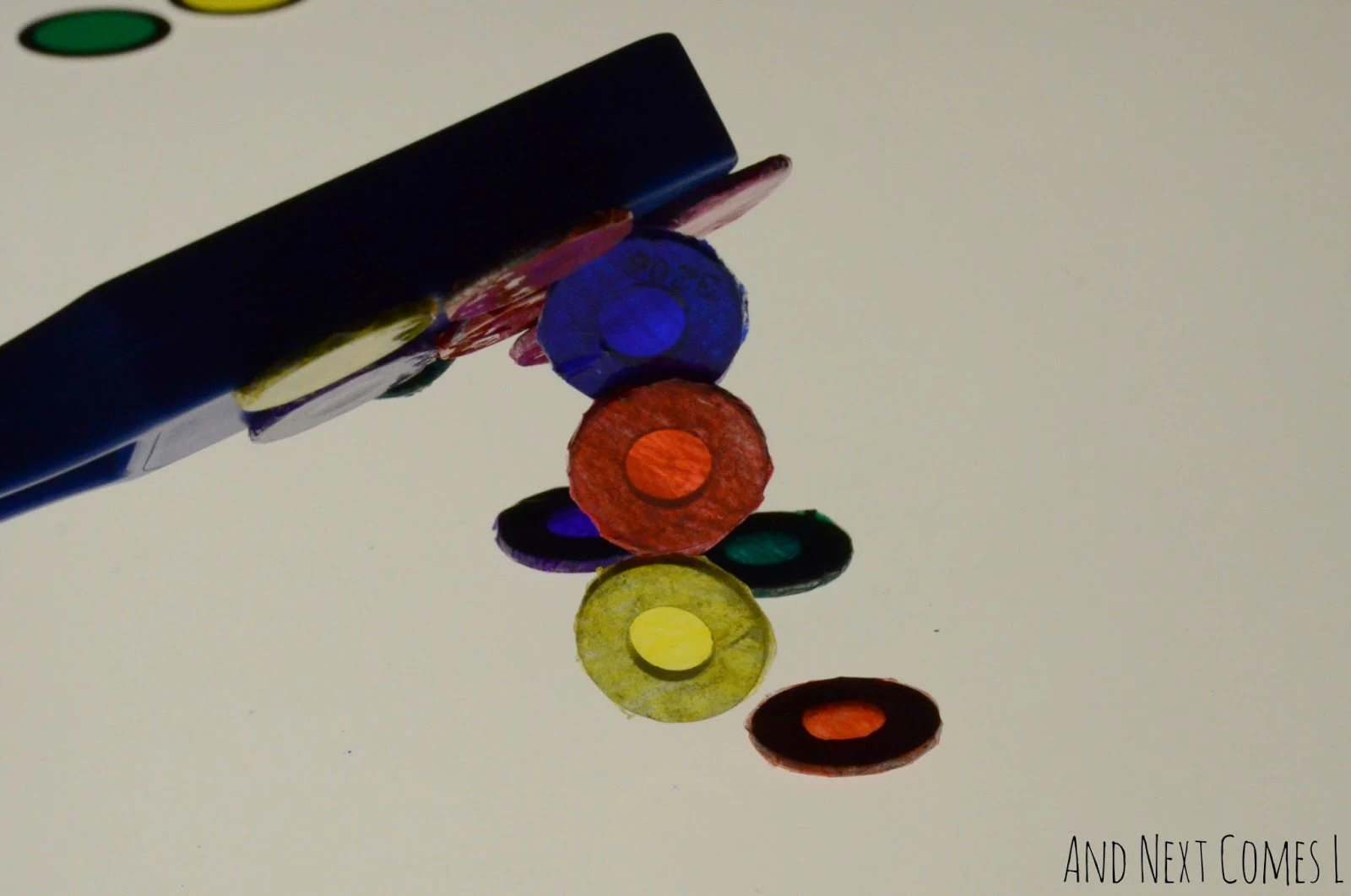There's a small teacher store here that I had never been to despite wanting to check it out for years. I knew what would happen if I did. I just knew that I would come out with a bag filled with fun stuff for the boys. Finally, I gave in and decided to check it out with the my little shopping partners in tow. Some $65 later and a compliment on my well-behaved boys, I had a stockpile of new goodies to try out on our light table.
This post contains affiliate links.
Among the purchases was a set of magnetic transparent overhead counters similar to these. I paid $8 for 75. Ouch.
However, the boys, especially K, were absolutely mesmerized by them. As K was playing with them on our light table using a magnet wand, I began to examine the magnetic counters closer, thinking that there must be a way to make them for a fraction of the price.
So I did.
My price tag? Um, not sure really since I already had everything on hand. My guess would be pennies. PENNIES! That sure beats $8! And they work fabulously!
I had to do quite a bit of brainstorming in order to get the final result. I wanted them to be made from easy to find materials. The magnetic transparent counters that I purchased are beautiful on the light table, so I also wanted to mimic that same bright color scheme.
I also wanted to make sure my DIY version would work as well as the store bought ones when a magnet's near. Here are the store bought ones in action.
How to Make DIY Magnetic Transparent Counters for Light Table Play
I figured that I could use some flat washers from the hardware store so I asked my husband if we just happened to have any kicking around to try out my idea. Boy, was I in luck! We happened to have a box of 1/4 inch flat washers. I used fourteen so far, but I might go back and make more yet.
Now that I had my washers, I needed to make them colorful. I was originally trying to figure out how I could use colored transparencies similar to the ones I used to make the color blocks and the light table shapes and letters, but I could see the daunting task of adhering them to the washers ahead of me. What glue would I use? Oh and would there be any easy way to glue them on one at a time? Then there's all the circles I would have had to cut out...geez, that wasn't going to be simple at all. So I went to bed, hoping to be inspired the next day.
The next morning I saw that the drawer with all of my beloved washi tape was open. I only have patterned washi tape so I knew that it wasn't going to be quite what I wanted, but I tried it out anyway. It adhered amazing and looked pretty cool on the light table. Yet, I wanted solid colors. That's when I saw the clear packing tape and my colored Sharpies. Then inspiration struck!
As you can see, my DIY counters are as bright and vibrant and in some cases, brighter, than the store bought ones. Obviously, mine don't have as big of a colored surface as the store bought ones, but for the fraction of the price, I'm not going to complain!
Ready to make some of your own? Well, grab your 1/4 inch flat washers, some clear packing tape, a variety of colored Sharpies (you can make any colors you want!), and some scissors.
What I did was color the sticky side of the packing tape with the colored Sharpies. I chose to do the sticky side so that the color would be sealed on the inside of the finished product. I also had to color in different directions to make sure that the tape was evenly colored. Let it dry for a bit. Then lay the flat washers on the newly colored tape. Then fold the packing tape over so that there is tape on each side of the washers. Trim around the washers with your scissors. Then rub your fingers along the edge of the washer to make sure the tape is sealed all around. That's it!
They look lovely, don't they?
And they behave just like the store bought ones, if not better. The only downside to my homemade ones is that they don't work well for color mixing. Perhaps if I used a lighter green, blue, and purple, I could still layer the counters to do some color mixing. But honestly, the boys are more interested in their magnetic properties at this point than the fact that they can be used to explore colors.









